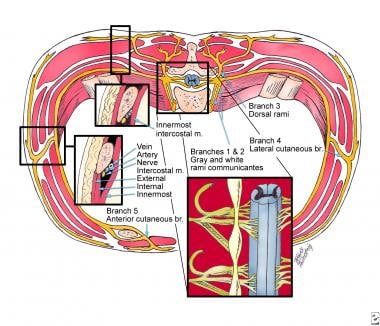

The more flexible muscles move, while the stiff ones do not. In a multisegmented system in which many segments contribute to any motion, the path of least resistance is taken. Teenagers regard sitting with a rounded back and abducted legs as appropriate and “cool.” Sahrmann emphasizes that a fault in a base element (the musculoskeletal system) involves alteration of the length-tension properties of the muscle. He had also learned to integrate breathing into functional activities and to lean forward by flexing the hips (by moving the pelvis forward and downward) rather than flexing the spine. Three weeks into the treatment, the patient reported that he had no more dribbling after voiding. Pelvic floor strengthening and relaxation exercises (anterior and posterior muscles) also combined with functional activities and breathing.Stabilization of the intrinsic low back muscles and the transversus abdominis muscle.Stretching of the tight muscles and strengthening of antagonists.Mobilization of the hip joints in all planes.

The patient then admitted to already having post-void dribble. This could help prevent post-void dribble in the future (see the section on male incontinence, pp. The therapist explained to the patient that it is important to include activation of the pelvic floor muscles when exercising the trunk muscles, in order to improve the foundation of the low back. The lumbar stabilizers, including the transversus abdominis muscle, were weak. The patient was a “chest-breather” and was not engaging the pulmonary diaphragm correctly. Active hip flexion was only approximately 90– 100°, and the hamstrings and tensor muscles were tight. When questioned, he stated that wearing tight jeans led to worsening of the back pain. His sitting posture was as described above. Unfortunately, the evidence for this is still only clinical, rather than statistical.Ī male patient aged approximately 60 attended physical therapy for chronic lower back pain. A lifestyle of this type also compromises diaphragmatic breathing. Individuals who spend time sitting on a couch watching TV, who have come to be known as “couch potatoes,” can develop back and pelvic floor problems due to their lifestyle. Weakness and altered length tension of muscles in the hip, pelvis, and lower back region ensue, as described below. Constantly wearing high-heeled shoes can influence the posture unless the hip muscles are kept flexible. Many young adults lack mobility in their hip joints (and compensate for this with excessive lumbar flexion) because their tight pants do not allow normal hip movement.

Pitfalls today include “textile contractures,” involving shortened muscles due to the wearing of tight clothes. Fashions requiring the wearing of tight corsets or girdles, which at times are considered socially desirable, cause a variety of postural, abdominal, and pelvic symptoms, as they maydisplace and compromise the internal organs. The stability, mobility, and muscle strength in the pelvic region may be lost in the sedentary, “modern” Western lifestyle, where people travel by car and use elevators instead of climbing stairs. Individuals who squat or kneel during activities of daily living, as is customary in many countries, activate muscle chains that may contribute to good postural control and promote consistent strengthening of muscles in the legs, pelvic floor, and trunk ( Fig. Tanzberger pointed out that in the Islamic religion, both women and men kneel and lean forward during their five daily prayers, unloading the pelvic floor up to 1825 times annually. Women in Cameroon frequently sit on the floor and lean forward when working-in contrast to women in Europe and North America, where the pelvic muscles usually are held in a horizontal plane, carrying the weight of the viscera most of the time during the activities of everyday life. They attributed this to the integration of pelvic movements into dancing and activities of daily living. Krüger and Krüger observed women in Cameroon and reported that incontinence was less common there in comparison with Europe and North America. In some cultures, for example, the pelvis is important and is emphasized during dance and movement, while in other cultures it is regarded as taboo.


 0 kommentar(er)
0 kommentar(er)
